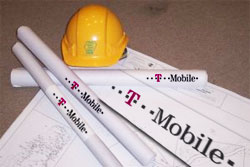For the most recent info, check out the 2010 T-Mobile Plans | Mobile Broadband Review

T-Mobile’s 3G webConnect plan is very similar to ATT’s LaptopConnect plan. Both are 5GB and include free WiFi.Last time we covered T-Mobile plans, there were two plans that offered either T-Mobile HotSpot (WiFi) use or their 2G EDGE network. This time around we’ve got 2 T-Mobile 3G plans to work with in addition to their staple WiFi plan:
1. T-Mobile Total Internet for $39.99
2. T-Mobile webConnect 200 MB Data Plan Lite for $29.99
3. T-Mobile webConnect 5GB Data Plan for $49.99
The cheaper T-Mobile Total Internet is a plan that you can add to your T-Mobile phone for unlimited data on your cell and laptop via their EDGE and WiFi networks.
Since EDGE is a 2G technology, it’s not all that fast but still better than dialup and is available just about everywhere except remote areas. As we’ve covered before, T-Mobile’s WiFi networks are pretty extensive.
The 2nd and 3rd plans are what we’re really excited about.
After much anticipation following the T-Mobile G1 and the announcement of their 3G network, it only made sense that they would have a mobile broadband plan for busy laptop users like us. Reigning in at $49.99, it undercuts h the rest of the industry by $10. While we hoped that they’d do the regular undercut the competitors prices by a bit, they didn’t.
Considering the fact that T-Mobile’s 3G network is vastly smaller than their competitors, there’s got to be something to sweeten the deal if they’re gonna charge the same right?
Well…sort of.
Like the T-Mobile Total Internet plan, you do get unlimited use of T-Mobile HotSpots. While this is a nice freebie, AT&T already offers this and they have a larger 3G network.
Here’s another noteworthy item.
Not only is the T-Mobile webConnect’s price the same as Verizon, Sprint and AT&T, but so is the data use cap.
Yup, that’s right. T-Mobile hopped on the 5 Gigabyte cap bandwagon.
What’s more is that they have an overage charge of $0.20 per MB (or more realistically $204.80/Gigabyte). While that’s cheaper than Verizon’s or AT&T’s, it still no chump change. We understand the purpose of the overage charge is to simultaneously discourage abuse of their 3G network and encourage use of their WiFi network. However, this setup benefits T-Mobile more than its customers.
How so?
WiFi (T-Mobile HotSpot) bandwidth is cheaper for them and they have alot more of it. For that reason, they can offer it as unlimited. Also, because it’s not as convenient as having an ‘always with you’ 3G connection, you’re naturally going to use it less. It doesn’t take a second to realize that if someone has to drive down to Starbucks to get online that they might do it less.
Also, 3G bandwidth is pretty precious for them right now. Since launching their 3G network relatively recently compared to AT&T, Sprint and Verizon, its naturally much smaller. Because its smaller, there’s less bandwidth to go around with data-thirsty 3G phones coming out in addition to AirCards and broadband cards. It’s not unimaginable to think that this step is not just a move to generate profit but necessary for them to stay afloat as they build out their network.
Depending on your web habits, 5 GB or even 200 MB may be enough for you. For figuring that out, check out Lesson 3 of Mobile Broadband Buyer’s Guide.
Once you understand this, it’s not surprise that they have the usual terms and conditions (you’d think they all use the same lawyer) that says:
(a) server devices or host computer applications, including continuous Web camera posts or broadcasts, automatic data feeds, automated machine-to-machine connections or peer-to-peer (P2P) file-sharing applications that are broadcast to multiple servers or recipients, “bots” or similar routines that could disrupt net user groups or email use by others or other applications that denigrate network capacity or functionality;
(b) as a substitute or backup for private lines or dedicated data connections;
(c) any activity that adversely affects the ability of other users or systems to use either T-Mobile’s services or the network-based resources of others, including the generation or dissemination of viruses, malware or “denial of service” attacks;
(d) accessing, or attempting to access without authority, the information, accounts or devices of others, or to penetrate, or attempt to penetrate, T-Mobile’s or another entity’s network or systems; or
(e) running software or other devices that maintain continuously active Internet connections when a computer’s connection would otherwise be idle, or “keep alive” functions. For example, you cannot use a Data Plan for Web broadcasting, or for the operation of servers, telemetry devices and/or supervisory control and data acquisition devices.
So, with their network still under development, its only natural to ponder on what T-Mobile 3G speed would be like.
